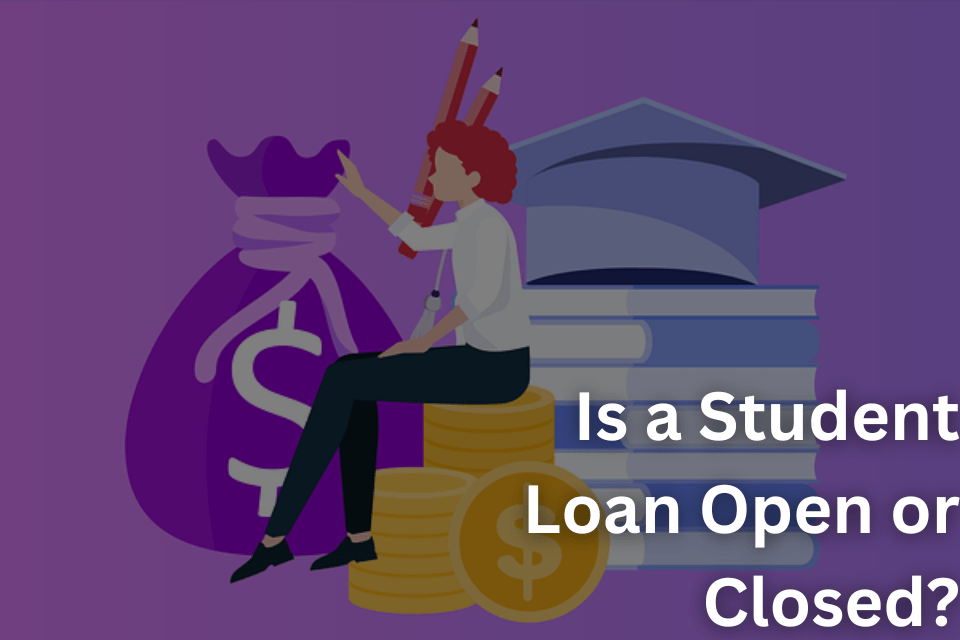Paying for college can be a daunting task, and one of the most common ways students and their families finance their education is through student loans. However, understanding the different types of student loans and their terms can be confusing. One of the most frequently asked questions about student loans is whether they are open or closed. In this article, we’ll explain the difference between open and closed student loans and give you an overview of the various types of student loans available.
What is an Open Student Loan?
An open student loan is a type of loan that allows the borrower to access the funds at any time, without any restrictions. These loans are typically unsecured, which means they don’t require any collateral. Open student loans are typically used to cover the cost of tuition, books, and other educational expenses. They can also be used for living expenses such as rent, food, and transportation. Open student loans are often offered by private lenders, such as banks and credit unions, and have higher interest rates than other types of student loans.
What is a Closed Student Loan?
A closed student loan, also known as a fixed student loan, is a type of loan that has a set amount that must be repaid over a specific period of time. Unlike open student loans, closed student loans have a fixed repayment schedule, and the borrower cannot access additional funds once the loan has been disbursed. Closed student loans are typically used to cover the cost of tuition, books, and other educational expenses. They can also be used for living expenses such as rent, food, and transportation. Closed student loans are often offered by the government and have lower interest rates than open student loans.
Types of Student Loans
There are several types of student loans available, including:
- Federal student loans: These loans are funded by the government and have fixed interest rates. Examples include Stafford Loans and Plus Loans.
- Private student loans: These loans are provided by banks, credit unions, and other financial institutions. They have variable interest rates and are typically more expensive than federal student loans.
- Parent Plus Loans: These loans are designed for parents of dependent undergraduate students. They have fixed interest rates and can be used to cover the cost of tuition, books, and other educational expenses.
- Consolidation loans: These loans allow borrowers to combine multiple student loans into one loan with a single monthly payment.
How to Choose the Right Type of Student Loan
When choosing a student loan, it’s important to consider the following factors:
- Interest rate: Federal student loans typically have lower interest rates than private student loans.
- Repayment terms: Federal student loans offer more flexible repayment options than private student loans.
- Eligibility: Federal student loans have more lenient credit requirements than private student loans.
- Use of funds: Federal student loans can only be used to cover the cost of tuition and other educational expenses, while private student loans can be used for any purpose.
It’s also important to compare the terms and conditions of different student loans to find the one that best meets your needs.
How to Repay Student Loans
Once you’ve graduated or left school, you’ll be responsible for repaying your student loans. The repayment schedule for student loans depends on the type of loan you have and your financial situation. Federal student loans usually have a grace period of six months before repayment begins, during which you won’t be charged any interest. During this time, you can also explore different repayment options, such as income-driven repayment plans or loan consolidation.
When it comes to repaying your student loans, it’s important to stay on top of your payments and to contact your loan servicer if you’re having trouble making payments. There are several options available to help you manage your student loan debt, such as:
- Deferment or forbearance: These options allow you to temporarily postpone payments on your student loans.
- Income-driven repayment plans: These plans base your monthly student loan payments on your income and family size.
- Loan consolidation: This option allows you to combine multiple student loans into one loan with a single monthly payment.
It’s also worth noting that student loan forgiveness programs may be available to certain borrowers, such as those who work in public service or non-profit organizations.
Conclusion
Paying for college is a significant financial undertaking, and student loans can help bridge the gap between the cost of education and what you can afford. Understanding the difference between open and closed student loans and the various types of student loans available is key to making an informed decision about how to finance your education. Whether you choose a federal or private student loan, make sure to compare the terms and conditions of different loans and to consider your repayment options carefully. Remember that repaying student loans is an important responsibility, and staying on top of your payments can help you manage your debt over the long-term.

